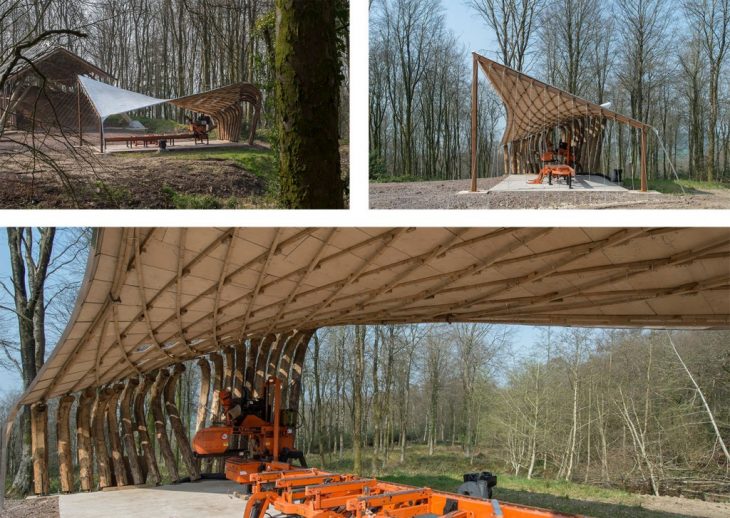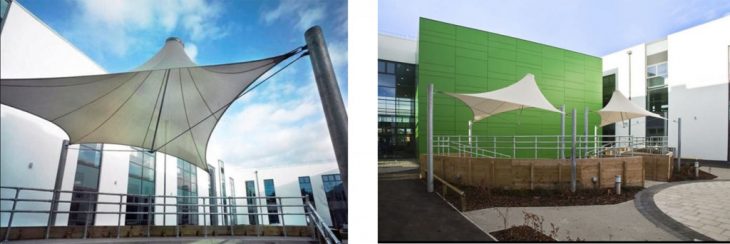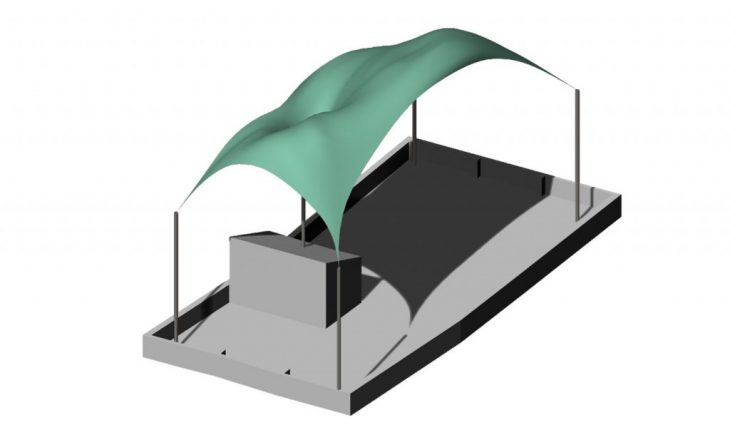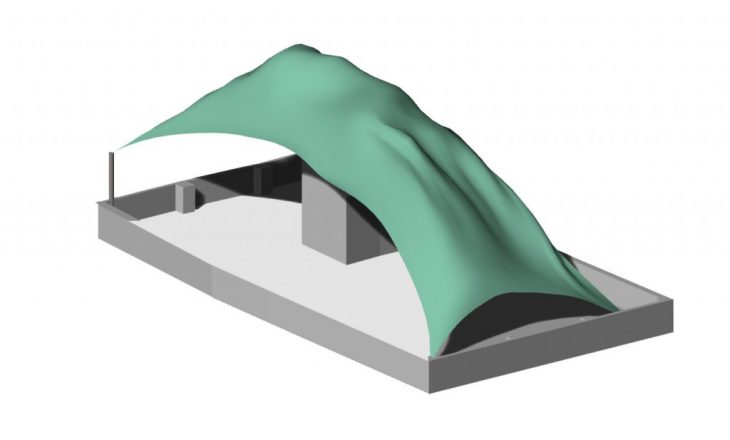BRIEF: The aim of this assignment will be to create an live-interactive installation using forces as
parameters using Kangaroo as main engine. The main goal will be to build a simple interface
where the user can “play” with inputs such as attractors, sliders, functions and time to
transform an object in space. The selected location for the installation will be the IaaC rooftop
area.
PRECEDENTS: The combination of the two following canopies were used as reference of the proposed installation for the Iaac rooftop.

1: A sculptural, tensile timber canopy has been constructed in Dorset woodland, UK. The project forms part of an ongoing attempt for the campus to maximize self-sufficiency both in construction material and heat energy.

2: Cable-and-membrane tensile structure (with PVC membrane) : A unique tensile structure featuring a flying raised conic. With a fun, functional and unique structure this design is inspired by integrating both the hyper and conic forms.
PROPOSAL: The project here developed incorporates both thoughts and elements of the previous structures and reflects on the weather conditions of Barcelona. The installation projected will provide protection from the cold winds in the winter and shade during the summer once its poles are easily adjusted for each season.
SUMMER FIT:

WINTER FIT:

MULTIPLE FITS: (VIDEO)
SCRIPT:
1. Create a mesh plane
2. Add a rectangle component to the mesh plane
3. Add a slide to define the X and Y of the rectangle
4. Once this is rectangle is connected to the mesh plane add a slider to define the width and height count of the mesh plane
5. Add a Boundary surface to the rectangle to create a surface.
6. Reparametrize surface.
7. Add a evaluate surface component and connect it to the surface and a multidimensional slider.
8. Explode the rectangle into smaller segments and add a point component to the vertices.
9. Deconstruct the existing mesh.
10. Use a “closest point” component where the cloud input is the deconstructed mesh and the point is the evaluated surface.
11. Merge the geometry using the closest point and point components as data.
12. From the mesh plane create a geometry component.
13. Connect the merged data and the geometry with a new merge component. Will call it “Main Merge”: the following data streams will be produced in the following steps.
14. From the mesh plane get all the edges of the mesh with the mesh edges component.
15. Collect this all the data with the merge component.
16. Extract the length of the line from this merged data and use it as the third data stream of the “Main merge”.
17. Load the vertices of the deconstructed mesh using a unit z component as the force vector.
18. Set this force to be a negative factor of a 10.00 value.
19. Use this load to be the forth data stream of the “Main merge”.
20. Make sure all the data streams of this merge component are flatten.
21. Use a “solver” component from Kangaroo to combine the goals.
22. Use the Main merge” as the goal object input.
23. Use a button component as the reset input.
24. Add a list item to retrieve the item from the list output
25. Add sliders for the iterations and damping values.
26. Connect the kangaroo result to a weaverbird’s picture frame to start creating the frame for the membrane.
27. Set colors for all geometries.
Wind Strikes is a project of IAAC developed by Sofia Madeira as part of the Computational Design course at the Master in Advanced Architecture program in 2018/19.
Tutor: Rodrigo Aguirre
Support: Daniil Koshelyuk